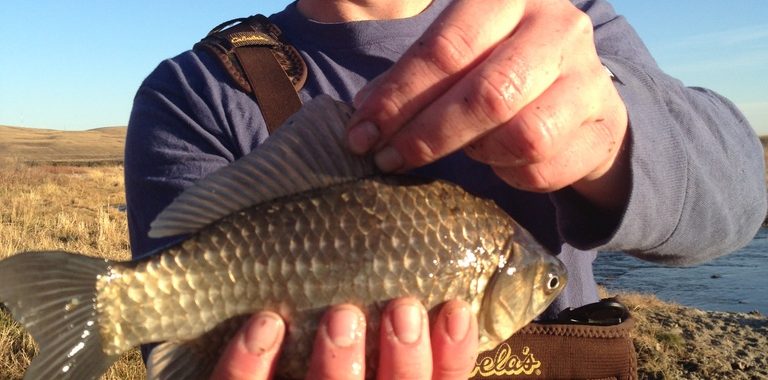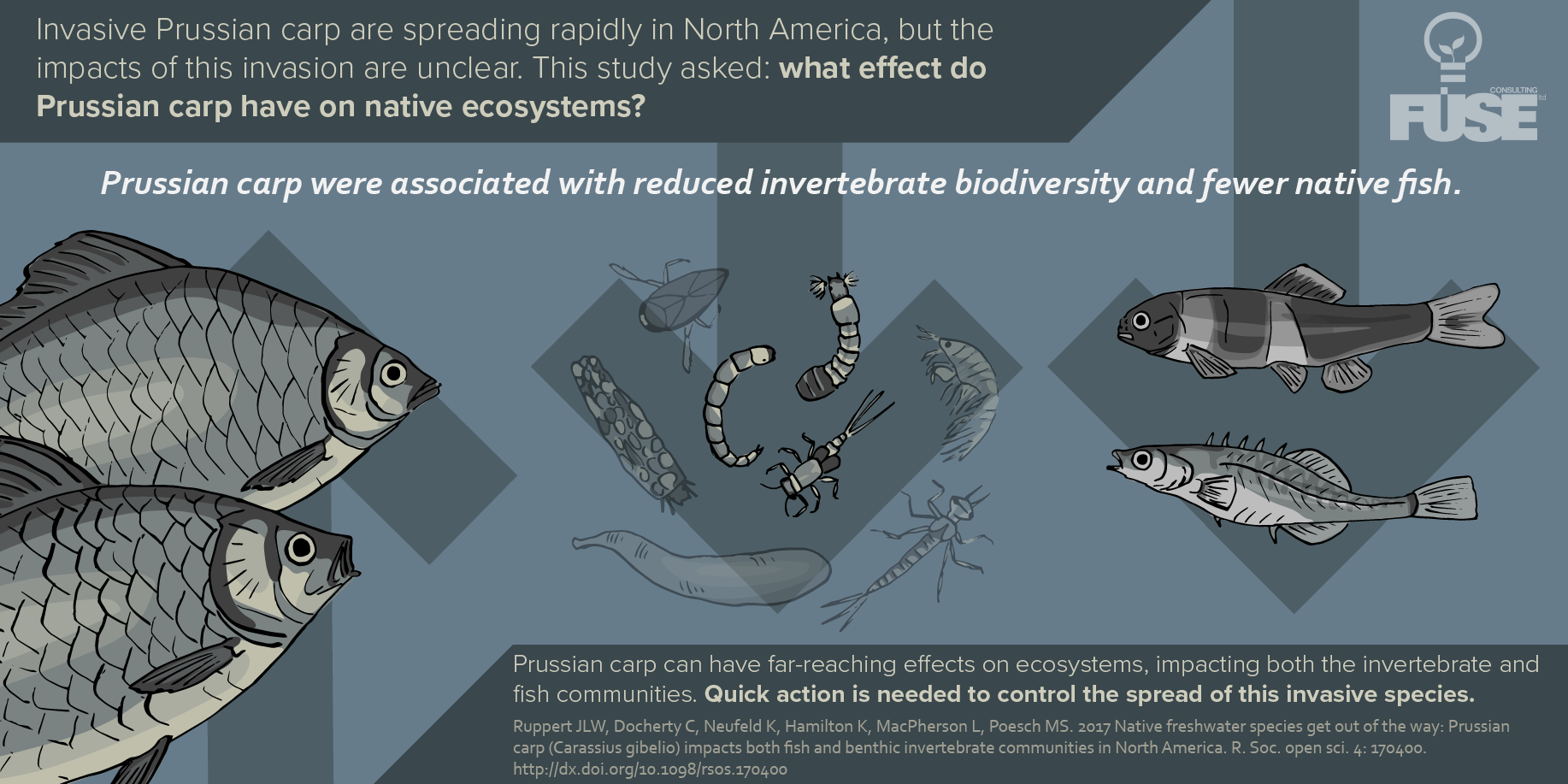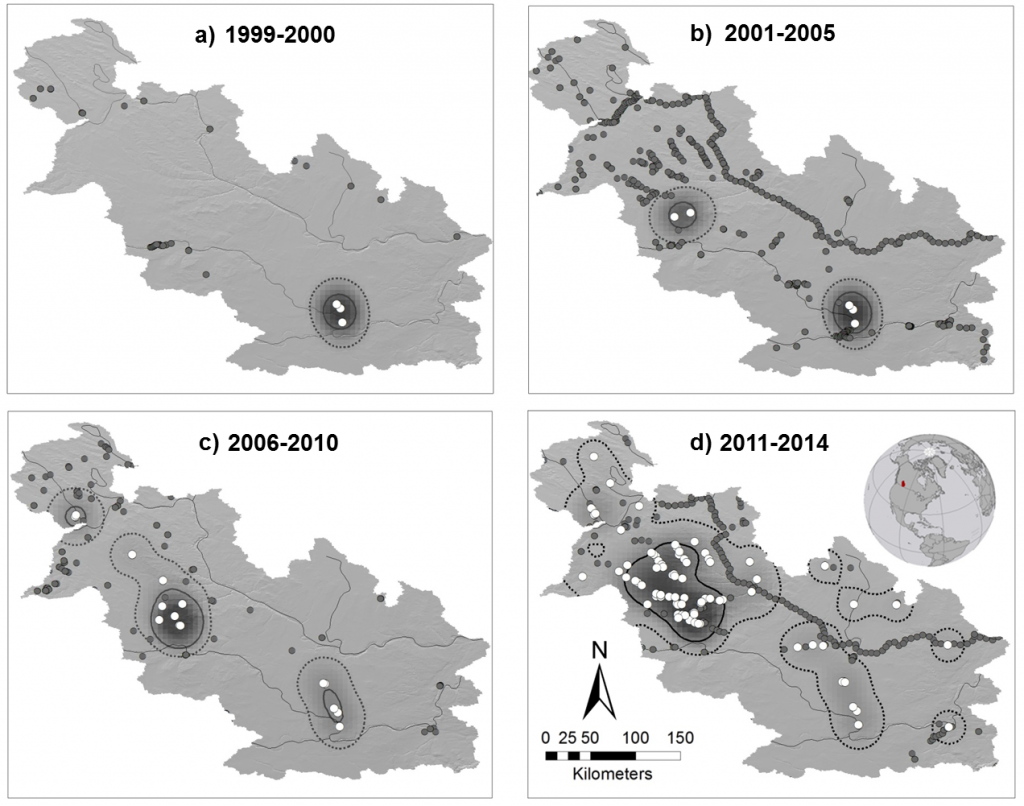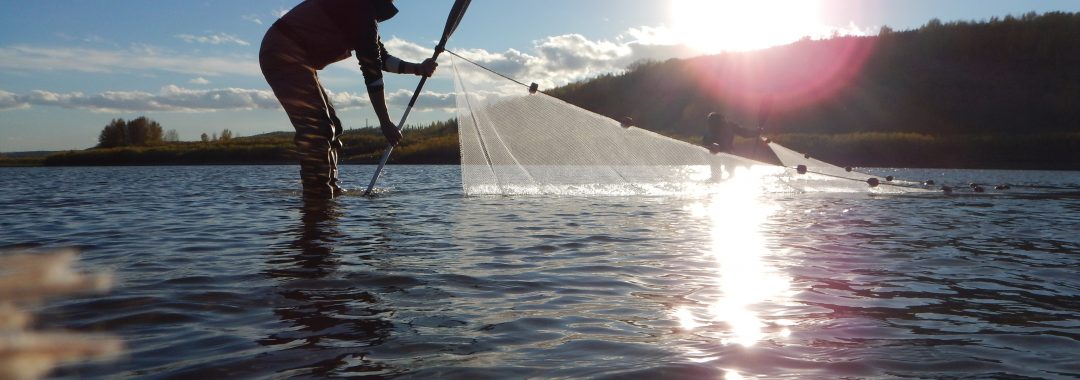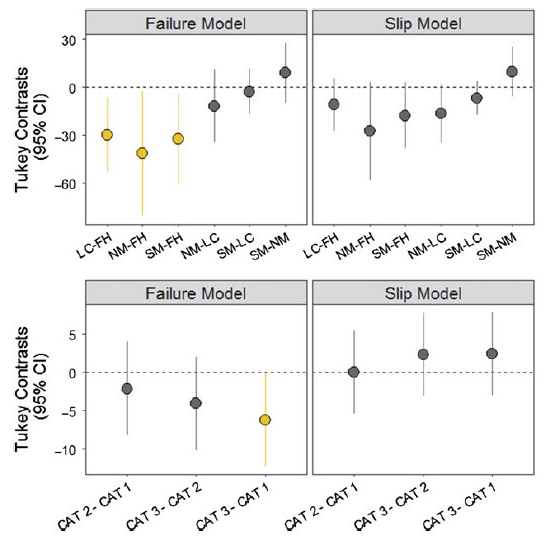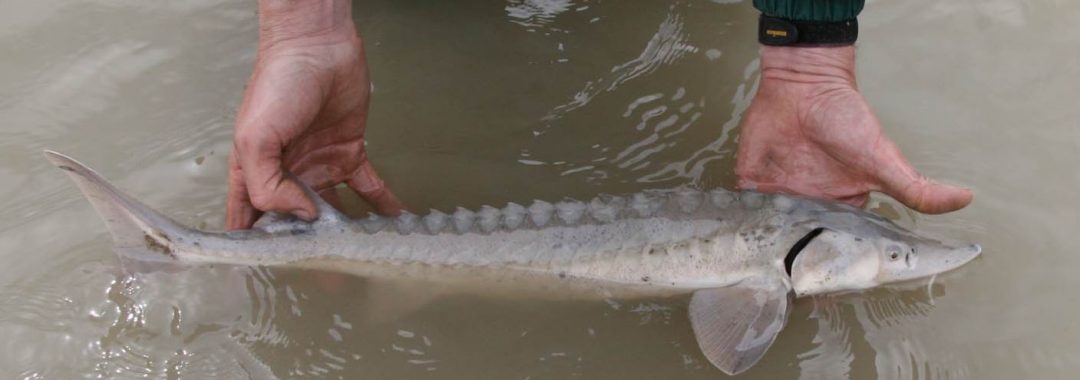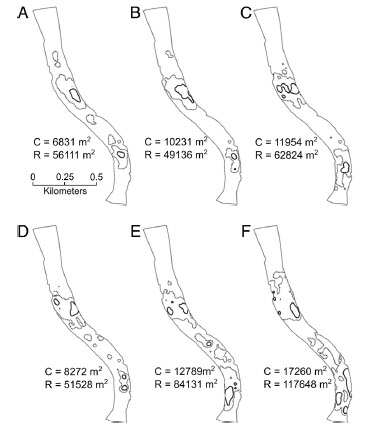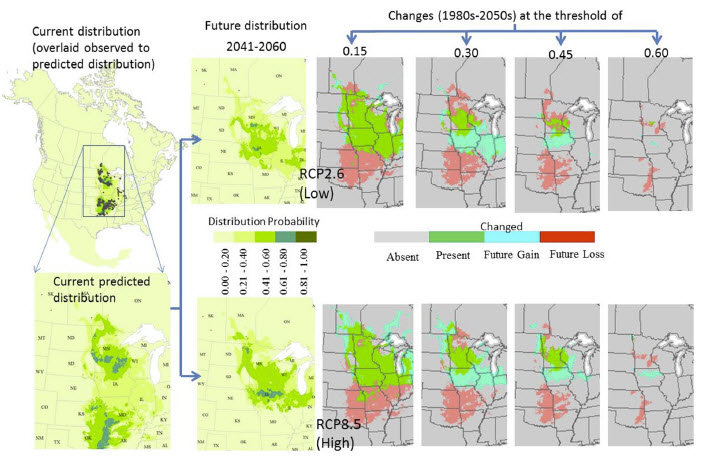Abstract
Stream hydrology is considered the primary factor in structuring freshwater fish communities,influencing stream habitats, food resources, and life‐history characteristics. Changes in stream hydrology, from climate change and anthropogenic sources (e.g. dams, irrigation channels), are thought to have adverse impacts on many freshwater species. The Rocky Mountain Sculpin (Cottus sp.) is a threatened species in Canada. Phenotypes of Rocky Mountain Sculpin were compared across a gradient of four streams differing in stream hydrology. It was hypothesized that Rocky Mountain Sculpin would show body forms minimizing drag in higher flow environments. Using geometric morphometrics and meristic counts, body shape, fin rays, and sensory pores were compared. As hypothesized, high‐flow river systems were correlated with sculpin with more dorso‐ventrally compressed, slender body shapes that minimized resistance to flow (P<0.001). Rocky Mountain Sculpin had more pectoral fin rays in populations with higher flows than lower flows,potentially allowing them to increase friction when gripping onto the substrate (P<0.001), and more anteriorly and dorsally located head pores to improve detection of floating prey (P<0.001). Biogeographic isolation and difference in flow regime were the likely basis for the observed morphological variation. The degree to which these phenotypes become fixed is unknown;however, since phenotypic diversity parallels genetic diversity in Rocky Mountain Sculpin,there is the possibility that persistent selection of these phenotypes can make it difficult to adapt to rapidly changing habitat conditions, such as changing flow. This study emphasizes the importance of considering phenotypic and morphological variation when evaluating how best to mitigate anthropogenic stressors and their impact on freshwater fishes.
Citation: Rudolfsen, T.*, Watkinson, D. and Poesch, M.S. (2018) Morphological divergence of the Threatened Rocky Mountain sculpin (Cottus sp.) is driven by biogeography and flow regime. Aquatic Conservation: Marine and Freshwater Ecosystems 28: 78-86.
Flow Regime across the range of Rocky Mountain Sculpin
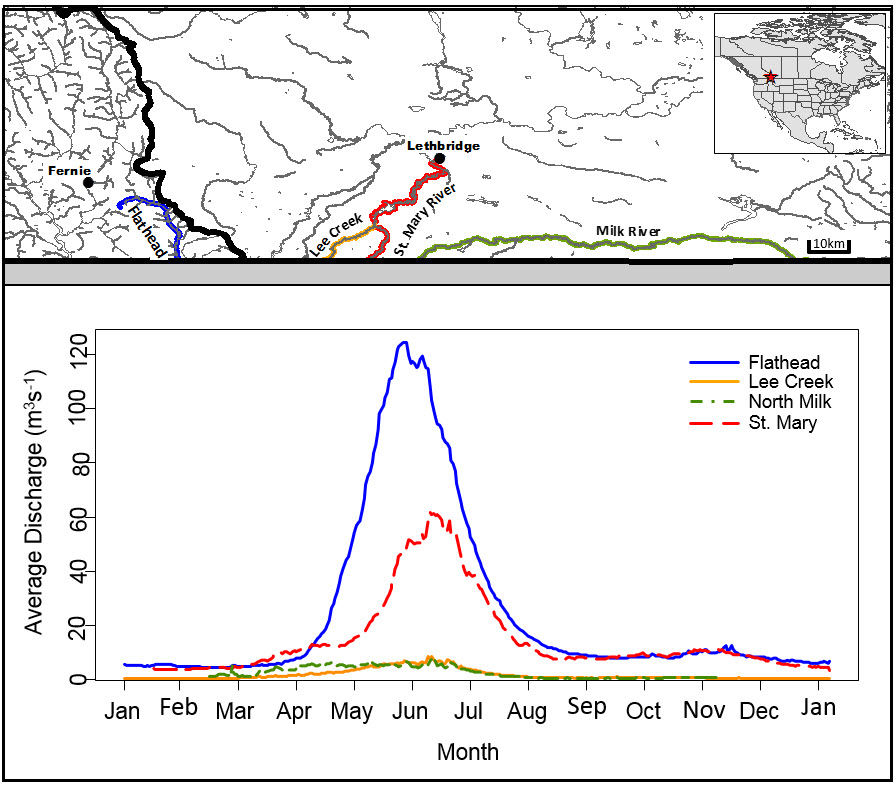
Morphological Differences Across Populations (Dorsal view) of Rocky Mountain Sculpin
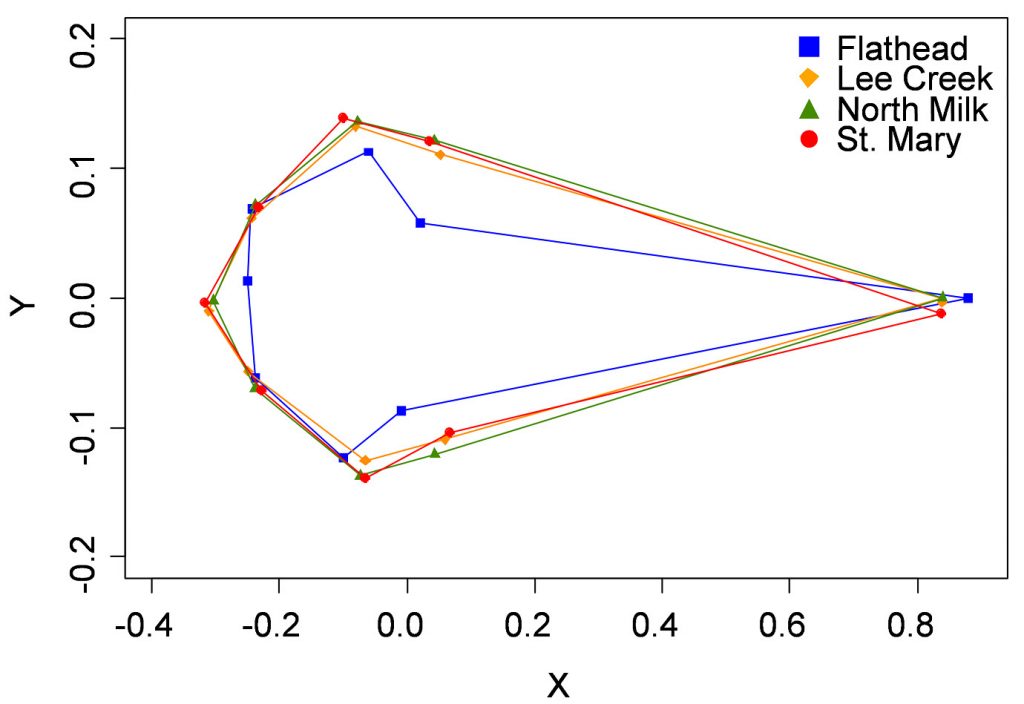
Also Read:
* Lab members: Tyana Rudolfsen, Mark Poesch. Check out opportunities in the lab!



